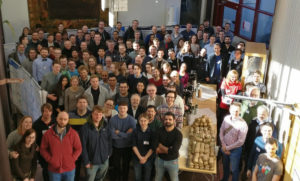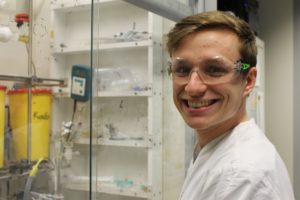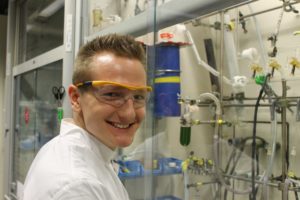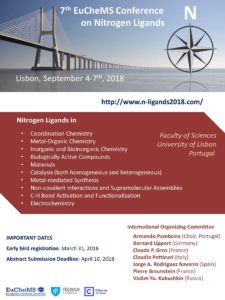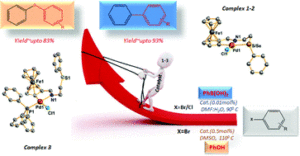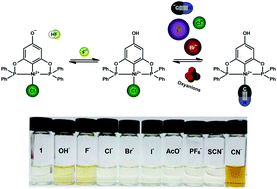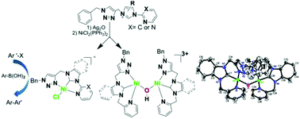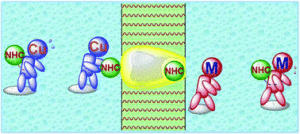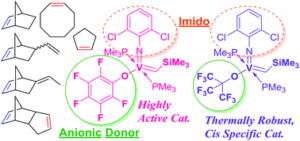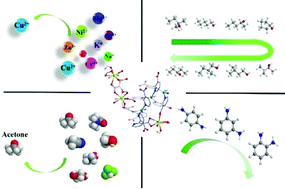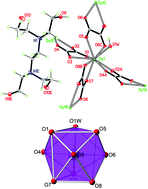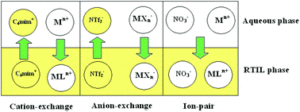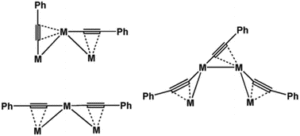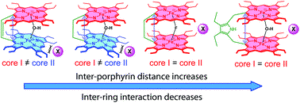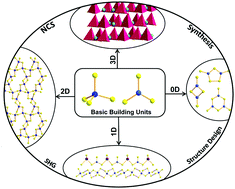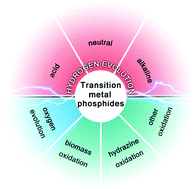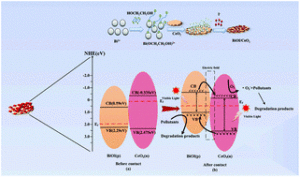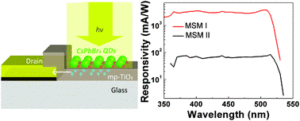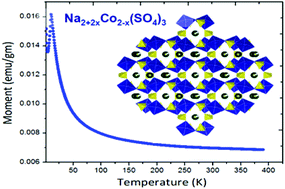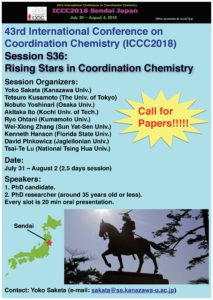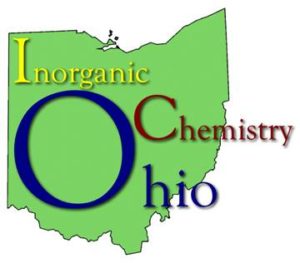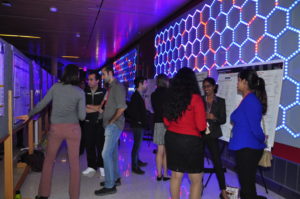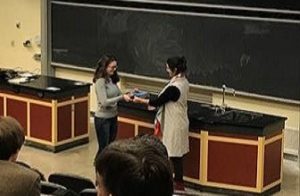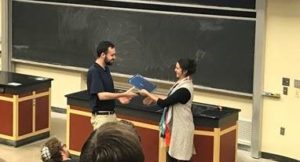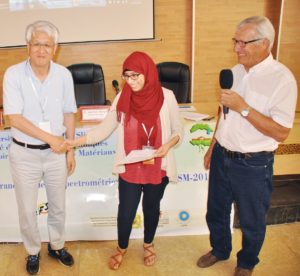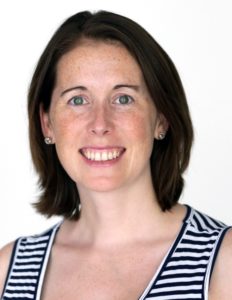 |
The 2017 Dalton Transactions University of California, Berkeley Lecture is Professor Jillian L Dempsey, at The University of North Carolina at Chapel Hill. The Lecture recognizes independent early career researchers who have made a significant contribution to the field of inorganic chemistry.
The academic selected to give the lecture receives the opportunity to present at UC Berkeley, a plaque, a $500 honorarium, a dinner and an invitation to publish in Dalton Transactions.
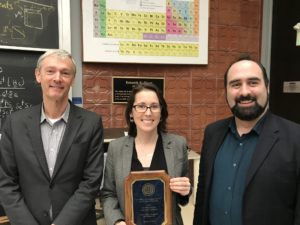
Jillian Dempsey (center) receiving her award plaque from Dalton Transactions Editorial Board Chair John Arnold (left) and Executive Editor Andrew Shore (right) |
Professor Dempsey’s lecture was entitled Proton-Coupled Electron Transfer Processes Underpinning the Production of Renewable Fuels:
| Abstract: The conversion of energy-poor feedstocks like water and carbon dioxide into energy-rich fuels involves multi-electron, multi-proton transformations. In order to develop catalysts that can mediate fuel production with optimum energy efficiency, this complex proton-electron reactivity must be carefully considered. Using a combination of electrochemical methods and time-resolved spectroscopy, we have revealed new details of how molecular catalysts mediate the reduction of protons to dihydrogen and the experimental parameters that dictate catalyst kinetics and mechanism. Through these studies, we are revealing opportunities to promote, control and modulate the proton-coupled electron transfer reaction pathways of catalysts. |
Jillian began her career with a degree at MIT, with undergraduate research supervised by Daniel G. Nocera, and went on to do a PhD with Harry Gray at Caltech. This was followed by a post-doc with Daniel R Gamelin before she began her independent career at UNC.
We spoke to Professor Dempsey about what drew her to a career in research:
| “I love the flexibility of the job and the opportunity to pursue whatever I’m most excited or interested about, including incredibly fundamental science. I also love the camaraderie of the academic community– and having mentors and role models around the country. It motivates me to pursue the best science possible!” |
And when asked about the secret behind her successful publication record, she had this advice to offer:
| “Take constructive criticism seriously– my best papers are the ones that were rejected first, or had the longest reviews to contend with upon submission. Also– present your unpublished work at conferences and to visiting seminar speakers! It helps you practice telling the story, realize and articulate impact, and get helpful feedback that helps shape the final thrusts of a project.” |
Previous recipients include Kit Cummins, John Hartwig, Geoff Coates, Paul Chirik, Dan Mindiola, Teri Odom, Daniel Gamelin, Trevor Hayton, Christine Thomas, Mircea Dinca, and Alison Fout.
An online collection of recent Dalton Transactions papers by recipients of the lecture can be found here.
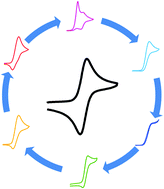
Graphical abstract of Jillian L Dempsey’s recent publication in Dalton Transactions. DOI: 10.1039/c6dt00302h |











